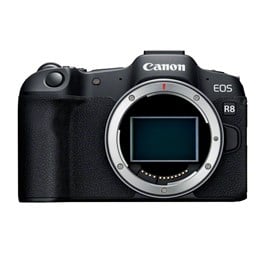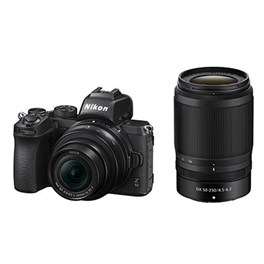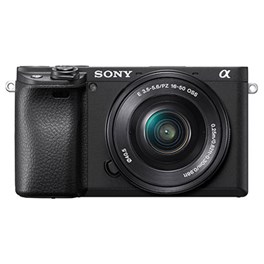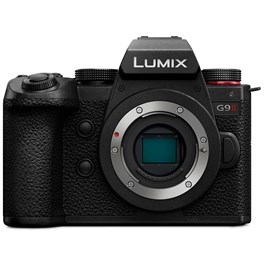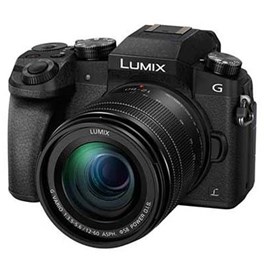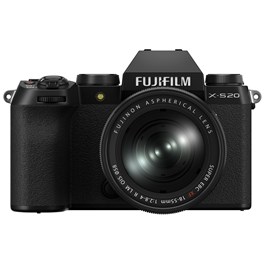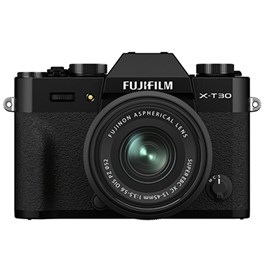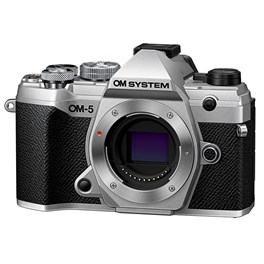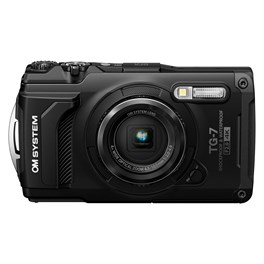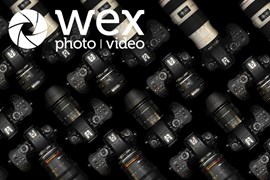
We’d love to be able to recommend just a single camera as the one and only best camera for travel photography. It would certainly make this blog a lot easier to write (and read). But the truth is, what makes the best camera for travel photography is going to be different for all different people.
Travel can mean many things after all – everything from family holidays and city-breaks to white-water rafting and hiking over the Andes. Everyone approaches travel photography differently, and as such, there are lots of different cameras that could be right for you.
For example, you might prefer a compact camera with a fixed lens for travel photography, embracing the all-in-one convenience. But then again, you might prefer the extra versatility of an interchangeable-lens mirrorless or DSLR camera, allowing you to craft your own setup by buying the lenses you’re likely to need.
Each of the major camera manufacturers offers multiple models that could easily be your next travel camera. As such, we’ve divided this guide up by brand to make it easier to navigate – here is a quick run-down of what to expect from each.
Canon - Canon has a lot to offer any travel photographer, with mirrorless cameras, DSLRs and fixed-lens compacts that all have their own advantages and disadvantages.
Nikon - Nikon F-mount DSLRs are some of the most well-regarded digital cameras in history, but its newer Z-mount mirrorless cameras offer some serious advantages for the travel photographer
Sony - As well as its flagship mirrorless ranges, Sony produces pocketable compact cameras with an emphasis on quality.
Fujifilm - The X series of mirrorless cameras have bags of style, but are also great for travel as they tend to produce images that don’t require too much post-processing.
Panasonic - Panasonic’s TZ compacts are some of the most popular travel zooms out there – though you may prefer the flexibility of a Micro Four Thirds Lumix G mirrorless model.
OM-System/Olympus - OM-System has revitalised the Olympus brand with some spectacularly capable travel-friendly Micro Four Thirds mirrorless cameras – but you may also want to consider one of Olympus’s ‘Tough’ compacts that can take a bit of punishment.
We’ve aimed to keep things affordable on this list – while prices vary, we’ve got plenty of budget-friendly options for those who don’t want to add too much to their travel budget. So, let’s get into the best cameras for travel photography…
Quick Navigation
Best Canon Camera
We’ve picked three cameras for this section – but really, we could have picked three entirely different cameras and still make a case for them being the best Canon travel cameras. The Canon range is big, with plenty of choice for users at every level. The manufacturer’s flagship EOS R range consists of some seriously impressive mirrorless cameras for professionals and beginners alike – we’ve had to be disciplined and restrict ourselves to just one suggestion.
This is because a Canon-using travel photographer may also want to use one of the firm’s fantastic EF-mount DSLRs, or indeed a PowerShot compact camera that still delivers image quality while offering unrivalled portability and convenience. We’ve picked one of every flavour, so whatever type of travel photographer you are, there should be a Canon camera here to tempt you. We’ve kept things towards the beginner to mid-range end as this likely suits most travel photographers more. If you do want something with a bit more kick, our list of the best mirrorless cameras includes some of the top-end EOS R models.
Canon EOS R8 Digital Camera Body
Canon’s EOS R8 is designed for hybrid shooters looking to expand their creative territory and bask in the benefits of full-frame outside the studio. With a 24.2 megapixel full-frame CMOS sensor, the renowned Dual Pixel CMOS AF II system, excellent low-light performance and oversampled 4K up to 60 fps, this lightweight camera packs some heavyweight features into one compact, yet powerful package.
£1,189.00 View
Pros:
- Great low-light performance
- Surprisingly lightweight and compact
- Excellent video capabilities
Cons:
- The battery life could be longer
- No in-body image stabilisation
The R8 is one of Canon’s full-frame mirrorless options and it's ideal for travel photography for a number of reasons including the fact that it has a full-frame sensor in a comparatively small body. It’s surprisingly lightweight and compact and naturally, this will be a benefit to any travel photographer. The R8 features most of the internals found in the more expensive R6 Mark II but doesn’t quite keep up with its performance, but this is to be expected considering the price and what the R8 is designed for.
As with much of Canon’s mirrorless range, the R8 is a versatile camera that offers quality in both video and photo-taking. It has great low-light performance which again, is a must for anyone on their travels so that you can capture all the sights you see. And 4K60p 10-Bit Internal Video and Canon Log 3 means that you can really push the video to give quality output. However, it would be ideal to have some IBIS to help when filming or even just photographing handheld.
There are, of course, a whole range of excellent Canon RF lenses that you can use with this camera, even some with some stabilisation that will help with the lack of in-body stabilisation.
Canon EOS 90D Digital SLR Camera Body
The Canon EOS 90D comes as the upgrade to the popular Canon 80D. The 80D became a go to camera for both professionals and amateurs because it was such a versatile system, so this upgrade is sure to impress any level of photographer. It features a larger 32.5 megapixels APS-C imaging sensor that will produce some incredible detailed photographs and video footage. Like the 80D, the 90D has been designed for speed; catering to sports and wildlife photographers - Or anyone who has fast moving subjects. It's also capable or capturing some stunning 4K footage and of course, features Canon's EF-S mount, meaning there are a huge range of compatible lenses for you to choose from. Take a look at the impressive list of features this camera has!
£1,299.00 View
Pros:
- Optical viewfinder is a beaut
- Great image quality in JPEG and RAW
- Focuses very well in Live View
Cons:
- Surprisingly, focuses less well when you’re using the viewfinder
- No in-body stabilisation
For a travel-friendly DSLR, the Canon EOS 90D is tough to beat. It’s a more expensive option for sure, especially given that it’s APS-C not full-frame, but you do get a lot for your money here. The generous resolution of 32.5MP is a cut above a lot of cameras in this class, which tend to cluster around 24MP, and that means you have more freedom to crop into your images without degrading quality – and it’s also good news for printing.
Unusually for a DSLR, the EOS 90D focuses better when you’re using the LCD screen to compose in Live View than it does when you’re shooting through the (bright and beautiful) viewfinder. This is because of the Dual Pixel CMOS Autofocus that kicks in – you may find yourself defaulting to using the EOS 90D more like a mirrorless camera, relying on the screen more than the finder.
Best Nikon Camera
The Nikon Z series of mirrorless cameras offers a number of good jumping-on points for the curious photographer, and they also happen to be excellent travel cameras. Lightweight, speedy and packing tremendous image quality, Nikon’s Z-mount range is deservedly very popular among photographers at all stages of their journey, from beginner to expert.
But of course, there will always be those who prefer the tactile pleasures of a DSLR, and while Nikon is steadily discontinuing DSLR models as it moves over to the Z system, there are still options in the Nikon F series for those who want them. A DSLR may not feel like the natural choice for travel given that these cameras tend to be bulkier, but the format does present travel-friendly advantages of its own. The enormous range of F-mount lenses is a big one, especially given how many affordable optics there are for those who want to keep the cost of their system down.
Nikon Z50 Digital Camera with 16-50mm and 50-250mm Lenses
Introducing the Nikon's first DX-format mirrorless camera: The Nikon Z50. A welcome addition to the Nikon mirrorless family, the Nikon Z50 comes as an affordable bridge between beginners to enthusiast consumer camera systems. Inheriting features and inspiration from the successful Nikon Z6 and Z7 cameras, including the Nikon Z mount and the impressively fast and wide Hybrid autofocus system; the Z50 features a large 20.9 megapixel DX CMOS sensor and a powerful EXPEED 6 Image Processor. The power of the sensor and processor, coupled up with Intelligent Eye-Detection AF and 209 AF points across the frame allows for edge-to-edge sharpness and detail in your photos and videos. Capable of 4K/UHD recordings at 30p and 20 in-camera effects, this camera offers a whole host of creativity and versatility. This kit includes the NIKKOR Z DX 16-50mm f/3.5-6.3 VR and NIKKOR Z DX 50-250mm f/4.5-6.3 VR lenses.
£1,259.00 View
Pros:
- Portable and affordable
- Handles beautifully
- Comes as part of a great two-lens kit
Cons:
- No stabilisation
- Battery life lags behind rivals
The most affordable member of the Nikon Z family, the Nikon Z50 is what we in the business refer to as “a lovely bit of kit” (that’s a technical term). It was the first Z-mount camera to sport an APS-C sensor, but this isn’t just a slimmed-down version of the big boys. The Nikon Z50 is a compelling option in its own right, with well-crafted handling that’s built around a nice, big handgrip. Despite this, it isn’t too large, and won’t take up too much space in your suitcase.
The hybrid autofocus system impresses, and having 11fps burst shooting is a lot of people’s idea of a good time. While you can craft any kind of setup you want with the Nikon Z50, we’d seriously recommend getting it in the kit with the 16-50mm and 50-250mm lenses. That combination should see you more than covered in pretty much any travel photography situation you’re likely to find yourself in.
Nikon Z5 Digital Camera Body
Joining Nikon's Z series camera lineup, the Nikon Z5 is being coined as ‘The Catalyst'. This camera is aimed at those who wish to take a step into the world of full-frame photography. It features a powerful 24.3MP CMOS FX sensor that is capable of demonstrating the beauty of full-frame photography and gives you the opportunity to explore 4K video footage recording. It's equipped with a precise and fast autofocus system that is able to accurately track your subject, sporting both eye- and animal-detection. This is accompanied by a powerful in-camera 5-axis VR image stabilisation that will keep your images shake-free and your video footage smooth. This camera's design will open up the options of full-frame photography with ease and support, allowing you to truly appreciate the medium.
£1,349.00 View
Pros:
- Sublime full-frame image quality
- Dual SD card slots
- High quality electronic viewfinder
Cons:
- Burst mode tops out at 4.5fps
We’ve mostly steered clear of full-frame cameras in this guide, as they tend to be physically larger and carry higher price tags than what the majority of travel photographers typically want. The Nikon Z5, however, is a glorious exception – well priced and not too heavy, it’s an ideal jumping-on point for anyone who wants to experience the advantages of a full-frame sensor.
As such, its image quality is simply superb, delivering excellent image quality with generous dynamic range, even when using higher ISOs. This gives you a real advantage in low light, making it an ideal camera for capturing moody night-time cityscapes. The five-axis stabilisation also helps in this regard, especially if you pair it with a stabilised Z-mount lens. We also like the fact that the Z5 boasts two SD card slots. This gives you licence to shoot and shoot without worrying about data space – or, if you’re concerned that card corruption could lead to you losing your irreplaceable travel shots, use the second card as a backup.
Best Sony Camera
Sony’s high-end full-frame mirrorless cameras are its most famous models, but it also has quietly gone about amassing a formidable selection of travel-friendly cameras in its mid-range, and it’s these we’re going to look at here.
You may want to pick an E-mount mirrorless camera, in which case you’ll be best off with an APS-C A6000 model – a range known for its speed and portability. However, you may also find yourself tempted by Sony’s Cyber-Shot range of compact cameras, which deliver a highly portable shooting experience without sacrificing quality. The fact that the lenses on these cameras tend to be made by Zeiss certainly helps in this regard.
Sony also does a commendable job of keeping its older cameras in production even as new models come out, so don’t be afraid to look back in the range. It’s sometimes here that you can find the best bargains on camera gear, and that’s as good a segue as any for us to talk about our first pick…
Pros:
- Fantastic value for money
- High-quality pop-up viewfinder
- Beautiful Zeiss-made lens
Cons:
- Tiny design can be fiddly to use
- Other compacts have longer zooms
The Sony Cyber-Shot RX100 III is certainly not a new camera – it was released all the way back in 2014, and the RX100 series has reached the Mark VII iteration. However, we still feel the Mark III is a terrific little travel camera, and for the money Sony is asking, you get a tremendous amount of functionality at your fingertips.
It’s built around the combination of a 20.1MP 1-inch sensor and a Zeiss Vario-Sonnar T* 24-70mm lens. While other travel compacts offer more zoom, the RX100 III gives you a maximum aperture of f1.8-2.8, which gives you a lot more play in low light than you’d get with a camera offering something like f/3.3 at the wide end, as plenty of compacts do. Sony’s RX100 cameras are also built incredibly small. So small, in fact, that some people find them tricky to use – it’s probably best suited to people with smaller hands.
Sony A6400 Digital Camera with 16-50mm Power Zoom Lens
The Sony a6400 bridges the gap between the company's hugely popular full-frame CSC, and APS-C line-ups. Boasting AF acquisition of 0.02 seconds (the world's fastest), newly developed 'Real-Time Eye AF', and 'Real-Time Tracking'. The a6400 can also shoot up to 11fps with AF/AE tracking, while a BIONZ X image processor, a tiltable LCD touch screen, and 4K video recording are also included. This kit comes with the Sony E 16-50mm f3.5-5.6 OSS Lens
£869.00 View
Pros:
- Lightning-fast autofocus
- Slim and lightweight
- Loads of E-mount lenses
Cons:
- Control over-reliant on menus
- And the menus are confusing
How much can you accomplish in 0.02 seconds? Because the Sony A6400 can autofocus on a subject in as little as 0.02 seconds. Yeah. You think about that.
All joking aside, this is a special mirrorless camera, boasting pro-level features such as class-leading autofocus, but coming at a comparatively low price (it can be picked up with a 16-50mm lens for £999). Not to bang on, but the autofocus really is the star of the show – the A6400 can make use of Sony’s famous Eye AF, it’s got real-time tracking, and even an early form of AI-powered subject recognition. All this is powered by a combination of 425 phase-detection points and 425 contrast AF points. It can still manage a burst rate of 11fps with AF/AE tracking too – that’s got to be more than enough for anything that moves.
One downside: the slim body boasts relatively few physical buttons and dials, so you do have to get used to hunting through Sony’s slightly obtuse menu system to fiddle with settings.
Best Panasonic Camera
While Panasonic’s Lumix mirrorless cameras are deservedly popular, it’s also worth highlighting the firm’s travel-friendly range of Lumix TZ compact cameras. Putting big zooms in small, affordable bodies, these pocketable cameras are beloved of amateur snappers and travellers worldwide. Sure, you don’t get the ultimate flexibility of being able to change lenses – but with a 15x optical zoom or even a 30x optical zoom at your fingertips, is this honestly such a big deal? Be sure to be on the look out for a secondhand TZ200!
If you do feel you want an interchangeable-lens camera, then Panasonic has you covered in that department too. We’ve focused on the Lumix G cameras here, as they are generally cheaper and more travel-friendly than the full-frame Lumix S models. These fully-featured Micro Four Thirds mirrorless cameras can take advantage of one of the most comprehensive ranges of lightweight lenses out there.
Panasonic Lumix G9 II Digital Camera Body
Designed for high-speed photography, the Panasonic Lumix G9 II is a powerful next-generation camera ideal for solo creators. The new 25.2MP sensor, faster engine, and Phase Detection AF with 8.0-stop Body I.S deliver sharp, high-quality images and 5.7K 60p video. And, with improved ergonomics and a compact dust, splash, and freeze-resistant build, capture the all-important shot, whatever the weather.
£1,689.00 View
Pros:
- Excels in both photo and video
- Its AF recognition and tracking is impressive
- Tonnes of lenses to choose from
Cons:
- Battery life could be better
- It is bigger than other Micro Four Thirds camera bodies
The Panasonic LUMIX G9 II is designed for speed and packed with a suite of features that lend themselves to travel photography (and wildlife and sports... it's a great camera). If you're familiar with the G9 you'll see that this body didn't keep the same aesthetic. No, it took on a body very similar to the S5 II but with the smaller sensor and other internals, the G9 II is lighter and more portable.
Performance-wise, the G9 II excels in both photography and video. Its 5-axis stabilised 25MP CMOS sensor along with a phase-detect autofocus system and the processing power to manage this and more, demonstrates a clear step in the right direction for Panasonic. It’s this camera’s versatility that means it is a great option for travel photography as you’ll need the scope to adapt to situations. And, you have access to a huge range of lenses that should cater to pretty much anything.
Be sure to check out our review for the G9 II here.
Panasonic Lumix DMC-G7 Digital Camera with 12-60mm Lens
The Panasonic LUMIX DMC-G7 with 12-60mm lens combines stunning 4K (30p/24p) video, high resolution stills and a variety of practical new enhancements to help anyone capture the perfect image. Ideal for the aspiring photographer wanting to take their photography to the next level, the 16 megapixel Panasonic G7 is designed for ease-of-use without compromising on performance. The camera brings a variety of standout features including a built-in 2.36 million dot OLED viewfinder, 3.0" 1.04 m illion dot resolution free-angle touch screen display, improved autofocus, 8 fps burst shooting, Wi-Fi connectivity and a new 4K Photo mode that allows you to extract 8 megapixel stills from the 4K footage in-camera, so you'll never miss a moment.
£529.00 View
Pros:
- Fantastic value for camera and lens
- Useful 4K Photo modes
- Micro Four Thirds system offers lots of lenses
Cons:
- Resolution on the low side
- No stabilisation
One of the best bargains out there in mirrorless right now, the Panasonic Lumix G7 can be picked up with a 12-60mm lens for just a smidge over £500. A mirrorless camera with SLR styling, the G7 has a nice chunky handgrip for a secure hold, as well as a free-angle display that makes it easier to shoot from all sorts of different creative angles.
Its sensor is a 16MP chip; while this is still a fair chunk of resolution, it’s on the low side in 2023, so bear this in mind if you’re planning to make prints of your images. One thing the G7 also has in its corner though is Panasonic’s 4K Photo functionality. This enables the extraction of high-quality 8MP stills from 4K footage – so, yes, it does push the resolution down further, but it enables you to capture fleeting moments with enviable precision. Besides, 8MP is more than enough for sharing images online, and let’s face it, that’s all most of us are doing, most of the time.
Best Fujifilm Cameras
Fujifilm’s gorgeous X-series cameras are some of the best in the business for sheer shooting enjoyment. With physical control dials, retro good looks and fun Film Simulation modes that let you give your images a classic analogue look, a Fujifilm X camera makes travel photography fun – a useful antidote for anyone who is guilty of turning every holiday into an enforced photowalk (guilty).
But that’s not to say these cameras are frivolous or shallow – there’s a lot of shooting flexibility here, and the APS-C sensors offer dynamic image quality that’s a cut above what you’ll get from smartphones or smaller compacts. Fujifilm’s X-mount lenses are also excellent – producing stylishly distinctive images, and in many cases offering super-large apertures for getting crazy with shallow depth of field. If you want your travel photography to be about artistic expression and experimentation, more than it is about ruthlessly documenting everything you see in front of you, then a Fujifilm camera could well be your best bet.
Fujifilm X-S20 Digital Camera with XF 18-55mm R Lens - Black
In line with Fujifilm’s dedication to tried and tested technology, the X-S20 pairs its 26.1MP X-Trans 4 BSI CMOS Sensor with the high-speed image processing engine ‘X-Processor 5’. This masterful combination gives way to improved 6.2K 30P 4:2:2 10-bit internal video recording, an upgraded Hybrid AF system, and dedicated vlogging modes to inspire a new generation of creatives to push the boundaries.
£1,499.00 View
Pros:
- Gorgeous image quality
- Benefits from AI-powered subject-detection autofocus
- Battery lasts well
Cons:
- Comparatively small, low-res viewfinder
- Another card slot would have been nice (but we’re nit-picking, to be honest)
One of the newer members of the Fujifilm X line-up, the Fujifilm X-S20 is a much-anticipated successor to the beginner-friendly X-S10. Was it worth the wait? Oh, most definitely
Like all the best Fujifilm cameras, the X-S20 is just a delight to use. Its three command dials make for a smooth control experience, and for composition and monitoring, you’ve got the choice of a three-way tilting LCD screen or the OLED colour viewfinder. With 2.34 million dots of resolution, the viewfinder is basically unchanged since the X-S10. Some might be disappointed to hear this, but in truth it’s still perfectly useable, and par for the course for a camera at this price.
Image quality is great, with the sought-after Film Simulation modes present and correct. The fact that the X-S20 arrived in 2023 means it also benefits from what has become the must-have camera feature of the decade – AI-powered subject-detection autofocus, which can identify and lock onto specific subjects like humans, animals, vehicles and more.
Fujifilm X-T30 II Digital Camera with XC 15-45mm Lens - Black
The Fujifilm X-T30 II offers upgrades that will help meet the demands of the next generation of aspiring photographers and videographers. While physically identical to the original build, this model features upgrades to AF and a new high-resolution 1.62million dot LCD screen while maintaining what we loved most about the Fujifilm X-T30, as well as including the XC 15-45mm Lens.
£899.00 View
Pros:
- Pleasingly portable dimensions
- Terrific look to images
- Fast phase-detection autofocus
Cons:
- Awkward placement of Quick Menu button
- No stabilisation
A very minor refresh to the much-loved X-T30, the Fujifilm X-T30 II camera provides an accessible entry-point for beginners to the X series, without sacrificing any of the qualities that makes these cameras so popular. It still produces cracking JPEGs straight out of camera, and does so with impressive speed. The autofocus is a phase-detection system, covering the full frame, and the X-T30 can burst-shoot at a respectable clip of 8fps. If you don’t mind a 1.25x crop on images, you can switch to the electronic shutter and whack this up to 30fps – realistically more than enough for basically anything.
The X-T30 II makes a few sacrifices for such a travel-friendly, portable body. There’s no built-in stabilisation, and the screen only has a tilting action, rather than the fully articulating mechanism of some comparable cameras. Also, beware the Quick Menu button – its curious placement under the right thumb makes it easy to accidentally knock.
Best OM/Olympus Camera
OM-System, the artist formerly known as Olympus, offers a suite of cameras that are immensely well suited to travel. Its mirrorless range consists entirely of Micro Four Thirds models, meaning you have your pick of lightweight shooters with a fantastic range of travel-friendly lenses to pair with them. What’s also great about Olympus and OM-System cameras though is the fact that they have so many clever computational modes that provide real shooting flexibility. Capture astro images without a tripod, combine several shots together for an ultra-high-res photo, slow down shutter speeds with Live ND – there’s loads of creativity to be had.
Plus, the Olympus name also carries what are arguably the best beach-friendly waterproof compact cameras in the business, the Tough TG series. While you don’t get the same kind of flexibility you get with mirrorless, there’s a lot to be said for a camera that can be dunked in the sea and survive, especially for family holidays.
OM SYSTEM OM-5 Digital Camera Body - Silver
This compact and durable micro four-thirds camera is ready for any adventure, boasting IP53-rated protection against the elements, up to 7.5EV steps of image stabilisation, a 20.37 million effective pixel Live MOS sensor and a high-performance TruePic IX image processing engine. Combined with a whole host of computational and AF features, the OM-5 is all about less guesswork and more memory-making.
£899.00 inc. Cashback View
Pros:
- IP53 weather sealing
- Body isn’t too large
- Very effective stabilisation
Cons:
- Uses old-style Olympus menu system
- Port is micro USB not USB-C
The OM-System OM-5 is a magnificent riposte to those who were claiming Micro Four Thirds cameras were all getting a little bit big. Its tidy body weighs just 366g, making it perfect for throwing into a suitcase along with a few small MFT lenses and jetting off to new destinations. The OM-5 has plenty of other strengths that play well with travel – its IP53 weather-sealing is pretty much the standard to beat on mirrorless cameras right now (it’s even freezeproof down to -10°C). Plus, the highly effective stabilisation system is great for keeping shots sharp at slower shutter speeds, which is handy when light is poor.
The image quality this camera is capable of producing is sublime, and the on-chip phase-detection autofocus just gets out of the way and works, like it should. Nitpicks? We would have liked to have seen the updated OM-System menu interface introduced on the OM-1, rather than the older Olympus system from the E-M1 Mark III. Also, while USB charging is nice, a USB-C port is always preferable to micro USB. And that’s about it.
OM SYSTEM Tough TG-7 Digital Camera - Black
Venture further, dive deeper, and unveil more detail with OM SYSTEM’s Tough TG-7 12MP digital camera. Lightweight, compact, and rugged enough for outdoor enthusiasts, the TG-7 is waterproof to an impressive depth of 15m, shockproof to 2.1m, crushproof up to 100kg, and freezeproof at -10°C. It also boasts 4K video, an f2 wide 25-100mm 4x optical zoom lens, and a 12-megapixel backlit CMOS sensor.
£499.00 View
Pros:
- Extremely tough and waterproof
- 4x optical zoom with f2 aperture
- 4K video for all your adventure needs
Cons:
- Small sensor
- And low resolution
- We expected more of an upgrade from the TG-6
The Tough TG cameras from Olympus have long been regarded as the best tough compacts you can buy, according to aficionados of this kind of thing. A tough compact is just what it sounds like – a compact camera built to take a pounding, a soaking, a freezing, a crushing, a whatever-ing, and keep on working.
The Olympus Tough TG-7 is an excellent example because not only is it waterproof and durably built, it also takes great pictures. Its 25-100mm equivalent zoom lens has an aperture of f2, helping out when the light gets low, and the camera has loads of useful modes for different shooting scenarios, such as the new Underwater Microscope mode for close-ups beneath the waves.
The smaller 1/2.3-inch sensor does have an inevitable impact on image quality. You won’t get the same kinds of results you’d get even from a Micro Four Thirds camera, never mind APS-C or full frame. With that said, try taking one of those cameras snorkelling and see what happens to the image quality then.

Cameras
How to choose the best camera for travel photography
There are many reasons to get excited when planning a holiday or some travelling, from trying new foods and visiting famous sites to witnessing how different cultures go about their day-to-day lives. For the photographer, one of the most exciting prospects is arriving home with plenty of images and videos of their adventure – and for that, it pays to think about the most suitable equipment to record it.
The right camera or camera system for your specific travels depends on a range of factors, from your destination and the expected climate to the kinds of images you imagine you will be taking. Some photographers will be prepared to take a DSLR or mirrorless camera and a range of lenses, particularly if they imagine spending a significant amount of time behind their cameras, while others will want something equally capable while travelling as lightly as possible.
The first thing to think about is where you’re going. If you’ve booked a holiday you’ll probably have a fairly good idea of the kinds of images you may be taking, but if you’re travelling you may be deciding your specific route as you go. In either case, it’s worth thinking about the types of images you’ll be taking as this should not only influence your choice of camera but, in the case of interchangeable-lens systems, your lens and any additional accessories too.
If, for example, you’ll mainly be shooting landscapes and interiors, you may prefer to invest a little more in a wide zoom lens, but if portraits are more your thing, you’ll probably want to complement a standard zoom lens with a wide-aperture prime.
If you’re travelling over a period of a few months or longer, consider whether moving from one area to another will mean you’ll need to factor in a different climate. If you’re venturing into particularly harsh conditions, check that your camera will continue to work; your camera’s manual should provide minimum and maximum temperatures within which it should remain operational.
Make sure to also check that any memory cards, batteries and other accessories you plan on using are well guarded against the cold and inclement weather. Some are specifically designed to remain operational in challenging environments so seek these out if you feel you might need them.
Here are a few key features to look out for:
Wi-Fi
This will allow you to share your images as you go, without the need for a computer. This is great if you want to keep people up to date with your current locations.
GPS
GPS systems allow you to embed location information into the images you take, helping you to remember exactly where you’ve been. You may be able to map these too to show the exact route you’ve taken across a country. Make sure to turn these off if you’re not using them, though, as they are power hungry.
Articulated and touchscreen LCD screens
Shooting above a crowd, down on the ground or at an awkward angle is made infinitely easier with a tiltable or fully articulated rear display, but they’re particularly useful for travellers too. Not only do they allow you to get a less clichéd image of a familiar location, but screens which tilt across a full 180-degree angle to face the front allow you to easily take self-portraits once you’ve reached somewhere famous or particularly picturesque. Their articulation also allows you to adjust the screen to prevent glare when shooting in particularly sunny conditions, while touch operation allows you to press exactly where you want the camera to focus.
Viewfinder
Whether it’s optical or electronic, a viewfinder will help you compose your images in harsh lighting, where a rear display may be compromised by glare.
Waterproofing
If you’re planning on spending time by the beach, or part of your trip involves water sports of any kind, you’ll almost certainly be considering something waterproof. Traditionally, there have been two options: rugged, waterproof compacts and conventional cameras compatible with waterproof housings. More recently, we’ve also seen the rise of action cameras, which are a good choice if you want a camera you can easily use hands-free.
FAQs
What is travel photography?
Travel photography is all about capturing images that highlight the beauty, culture, and experiences of different destinations around the world. It involves capturing landscapes, architecture, people, and moments that tell a story of a particular place.
What equipment do I need for travel photography?
First up, you’ll need a decent digital camera (DSLR or mirrorless). Then, a versatile lens (such as a wide-angle or standard zoom lens), spare batteries, memory cards, a sturdy tripod, lens cleaning kit, and a camera bag for protection and easy transport.
How can I take better landscape photos while traveling?
To capture stunning landscape photos, focus on composition by using the rule of thirds, leading lines, and framing techniques. Pay attention to lighting, shooting during the golden hour (early morning or late afternoon), and using a small aperture (higher f-number) for a wide depth of field.
What are some tips and tricks for travel photography?
When photographing local people, always ask for permission before taking their picture to respect their privacy and culture. Engage with them, establish a connection, and use a portrait lens. And to convey the essence of a destination, focus on capturing unique details that reflect the local culture, traditions, and way of life. Photograph street scenes, local markets, traditional architecture, and candid moments that encapsulate the atmosphere.
How can I make my travel photos stand out on social media?
To make your photos stand out, focus on posting high-quality images with compelling captions that tell a story. Use relevant travel hashtags and engage with your audience. Consistency in style and posting schedule can also help grow your following.
How do we decide?
Our in-house photography experts, store staff and partners all work collaboratively to pour over these guides. The cameras and equipment recommended in our guides are based on their personal opinion, empirical experience and of course, feedback from our customers. We way up price, features, quality and the all-important 'je ne sais quoi' to make sure we recommend products that will delight and inspire.
If you would like more advice on any purchase our contact centre staff are here to help. Alternatively, you can reach us via email or social media. And don't forget. If you were to purchase anything based on our recommendations you'll be covered by our full returns policy
Buying Guides
